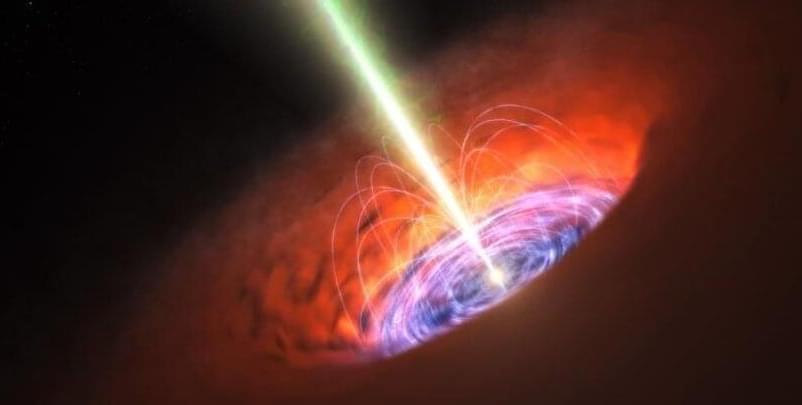Mar 4, 2022
What you need to know about nano-food
Posted by Quinn Sena in categories: food, nanotechnology
Circa 2013 o.o
Katharine Sanderson answers the big questions about the tiny technology on its way to your plate.
Circa 2013 o.o
Katharine Sanderson answers the big questions about the tiny technology on its way to your plate.
Circa 2013
A team of physicists at a university in the Netherlands have 3D-printed a microscopic version of the USS Voyager, an Intrepid-class starship from Star Trek.
Circa 2020 o.o!
A team of physicists at a university in the Netherlands have 3D-printed a microscopic version of the USS Voyager, an Intrepid-class starship from Star Trek.
The miniature Voyager, which measures 15 micrometers (0.015 millimeters) long, is part of a project researchers at Leiden University conducted to understand how shape affects the motion and interactions of microswimmers.
Continue reading “Scientists 3D print microscopic Star Trek spaceship that moves on its own” »
Circa 2012 o.o
For decades, the idea of a future where meals were condensed into tablets was so popular that it became cliché. So why are we not eating them now?
Do two promising structural materials corrode at very high temperatures when in contact with “liquid metal fuel breeders” in fusion reactors? Researchers of Tokyo Institute of Technology (Tokyo Tech), National Institutes for Quantum Science and Technology (QST), and Yokohama National University (YNU) now have the answer. This high-temperature compatibility of reactor structural materials with the liquid breeder—a lining around the reactor core that absorbs and traps the high energy neutrons produced in the plasma inside the reactor—is key to the success of a fusion reactor design.
Fusion reactors could be a powerful means of generating clean electricity, and currently, several potential designs are being explored. In a fusion reactor, the fusion of two nuclei releases massive amounts of energy. This energy is trapped as heat in a “breeding blanket” (BB), typically a liquid lithium alloy, surrounding the reactor core. This heat is then used to run a turbine and generate electricity. The BB also has an essential function of fusion fuel breeding, creating a closed fuel cycle for the endless operation of the reactors without fuel depletion.
The operation of a BB at extremely high temperatures over 1,173 K serves the attractive function of producing hydrogen from water, which is a promising technology for realizing a carbon-neutral society. This is possible because the BB heats up to over 1,173 K by absorbing the energy from the fusion reaction. At such temperatures, there is the risk of structural materials in contact with the BB becoming corroded, compromising the safety and stability of the reactors. It is thus necessary to find structural materials that are chemically compatible with the BB material at these temperatures.
In remote desert locations, at least two things are likely to be lacking: an electrical grid, and a source of water for agriculture. An experimental new system addresses both problems, by combining photovoltaic panels with an absorbent hydrogel.
Developed by scientists at Saudi Arabia’s King Abdullah University of Science and Technology (KAUST), the setup is known as the integrated water-electricity-crop co-production system – or WEC2P, for short.
It incorporates an array of connected photovoltaic panels, each one of which lies directly atop a layer of hydrogel. Both the panel and the gel form the lid of a downward-sloping metal box, which has a spout at the bottom.
Cookies are on the way out—but not enough is being done about browser fingerprinting. So what is it?
By the time our planet was four billion years old, the rise of large plants and animals was just beginning. Complexity exploded around that time, as the combination of multicellularity, sexual reproduction, and other genetic advances brought about the Cambrian explosion. Many evolutionary changes occurred over the next 500 million years, with extinction events and selection pressures paving the way for new forms of life to arise and develop.
65 million years ago, a catastrophic asteroid strike wiped out not only the dinosaurs, but practically every animal weighing over 25 kg (excepting leatherback sea turtles and some crocodiles). This was Earth’s most recent great mass extinction, and it left a large number of niches unfilled in its wake. Mammals rose to prominence in the aftermath, with the first humans arising less than 1 million years ago. Here’s our story.

Both quantum computing and machine learning have been touted as the next big computer revolution for a fair while now.
However, experts have pointed out that these techniques aren’t generalized tools – they will only be the great leap forward in computer power for very specialized algorithms, and even more rarely will they be able to work on the same problem.
Continue reading “What’s Inside a Black Hole? Quantum Computers May Be Able to Simulate It” »
Circa 2021
Israeli startup Redefine Meat has expanded throughout Europe and has debuted its plant-based ‘cuts’ of alternative meat that have been 3D-printed.
